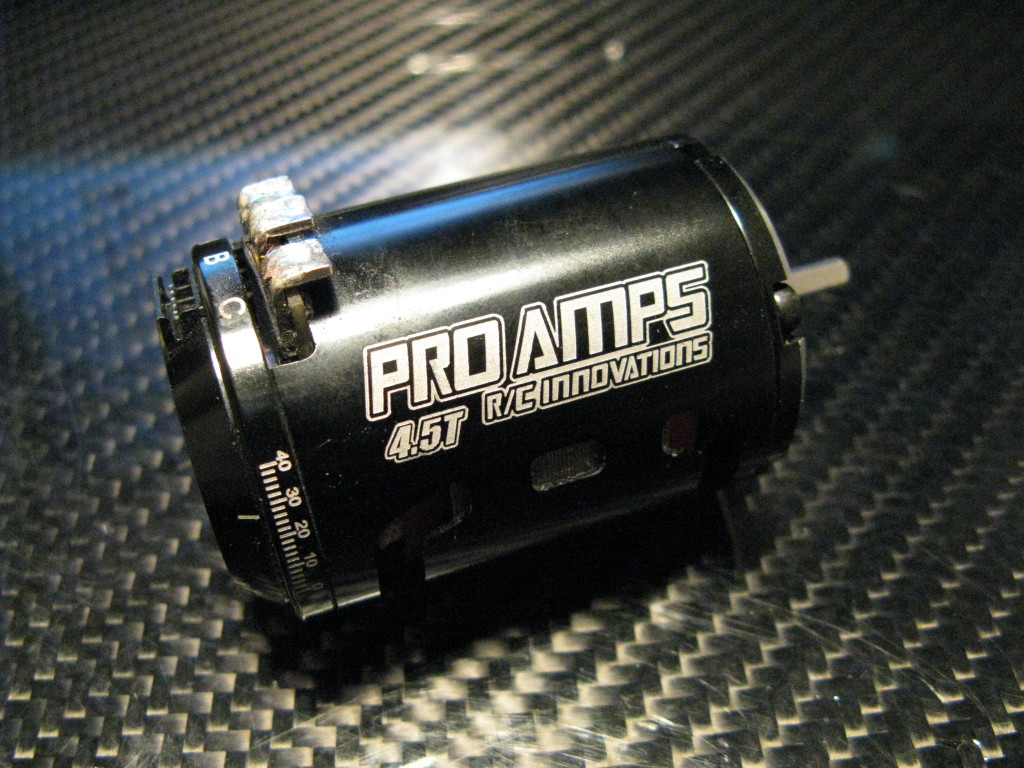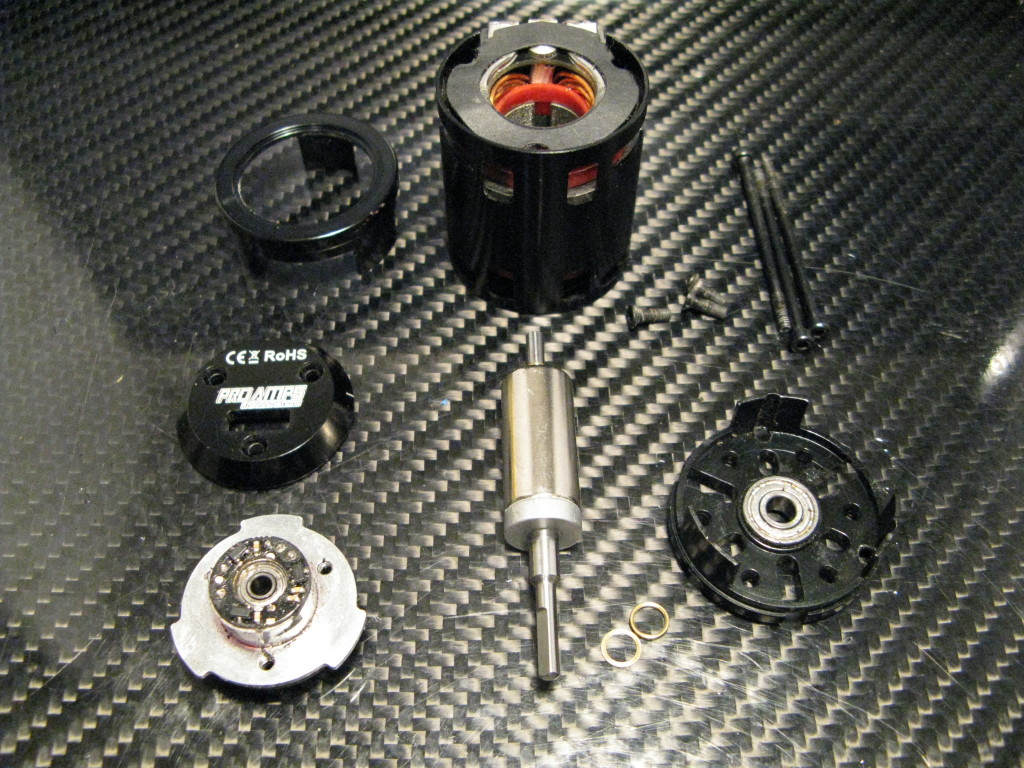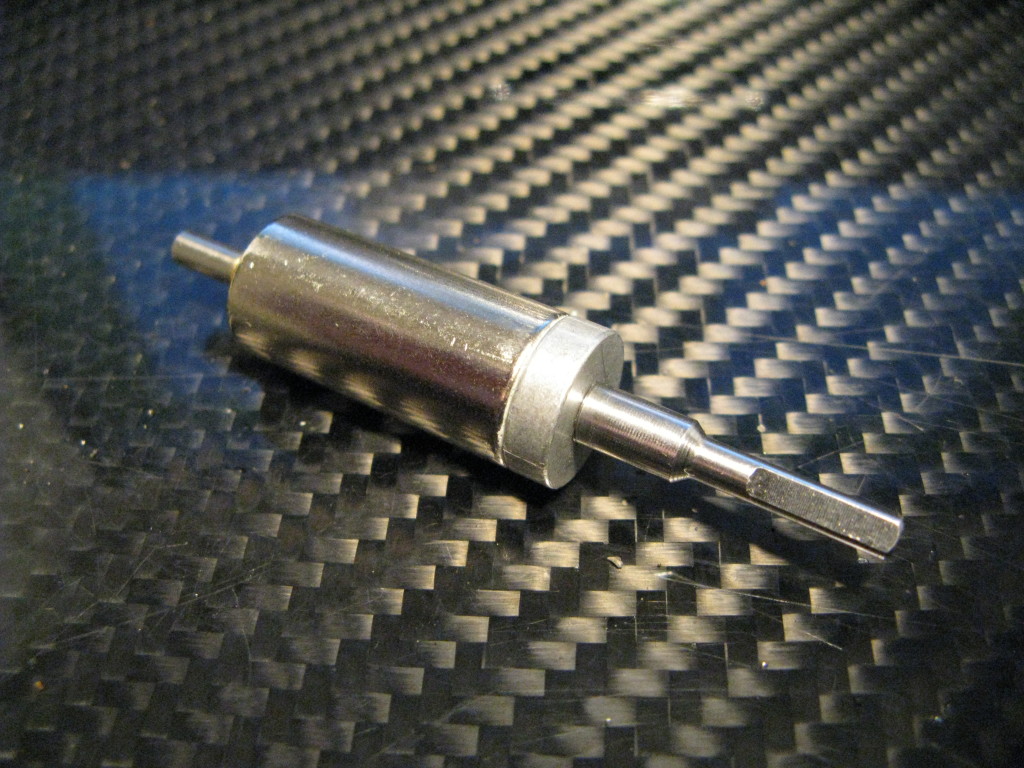2015 ProAmps Motors – Tested and driven
About a month or so ago, I received a new motor from the ProAmps brand to test. The motors have been in development for a while, and have had a thorough work over compared to the previous versions, so I was keen to see how it compared to the Hobbywing V10 that I have been running most recently (and a review of that motor is here). Unfortunately, a new job, moving interstate, weather and the new car all got in the way of being able to get a decent test on the motor… but finally I managed to get it in the car and on the track for a run.
But before the on track results, lets have a look at the motor itself
Features
Compared to the original ProAmps motor, the new motor is massively changed. It still retains the black look, but thats about all! The Can marking are pretty understated (which I like), and etched in a position that it unlikley to get covered by wires (unlike on the V10). Endbell timing goes from 0 to 40 degrees, with 20 being the neutral mark the motor is supplied with. As you can see, I have a 4.5t here, as mod is my class of choice… however there is also a full selection of stock motors available as well.
The endbell end of the motor has two sensor ports, allowing for easy fittment into a variety of vehicles without having to contort the sensor wire. My personal favourite is to use the vertical hole, just makes wire routing much tidier! Again, the markings are understated… although maybe the CE mark could be in a better place.
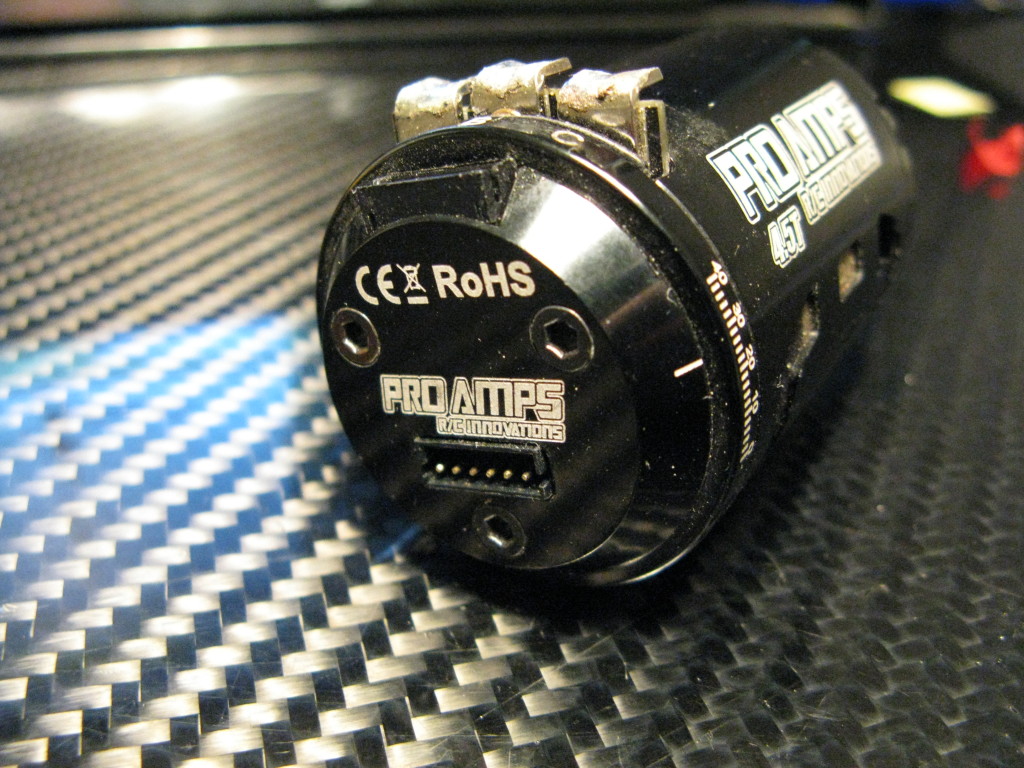
The front plate is pretty standard fare, and is seperate from the rest of the case (unlike the V10). There is a good sized chamfer on the front edge helps to clear the top deck on some cars, and there are decent, but not crazy, vent holes.
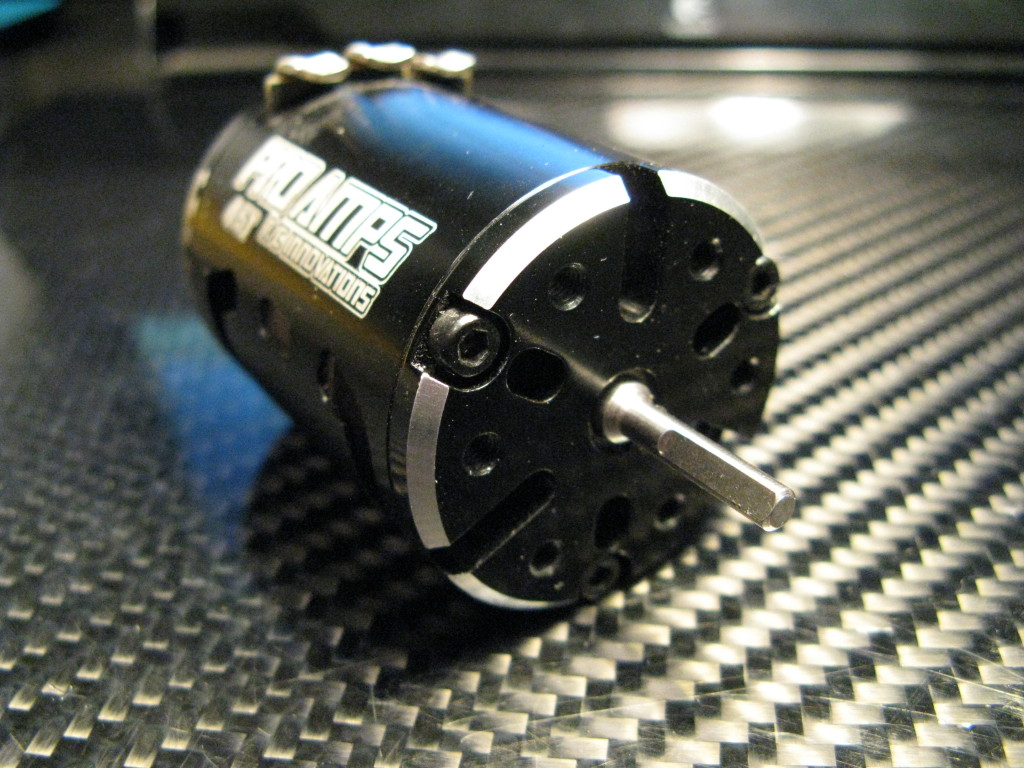
Moving onto the internals, everything is pretty much as it should be. It can easily be seen with the motor in hand that everything is of a high standard. All the components and the general construction exude quality. Certainly a lot of care and attention has gone into the design.
The sensor board is of an alloy construction, and securely mounts the sensors. The two plug ports can also be clearly seen. Again a quality piece. 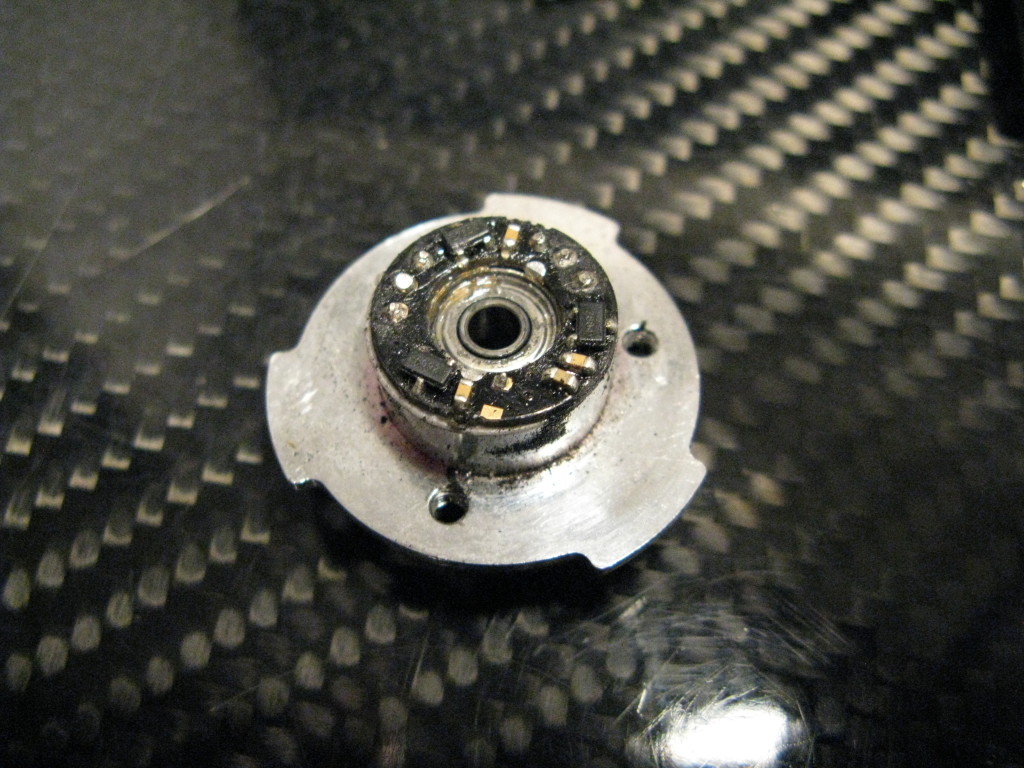

One of the big things I really like is the very large front bearing. There is no chance of this bearing going bang any time soon, and the removable front plate makes access a lot easier for cleaning and checking.
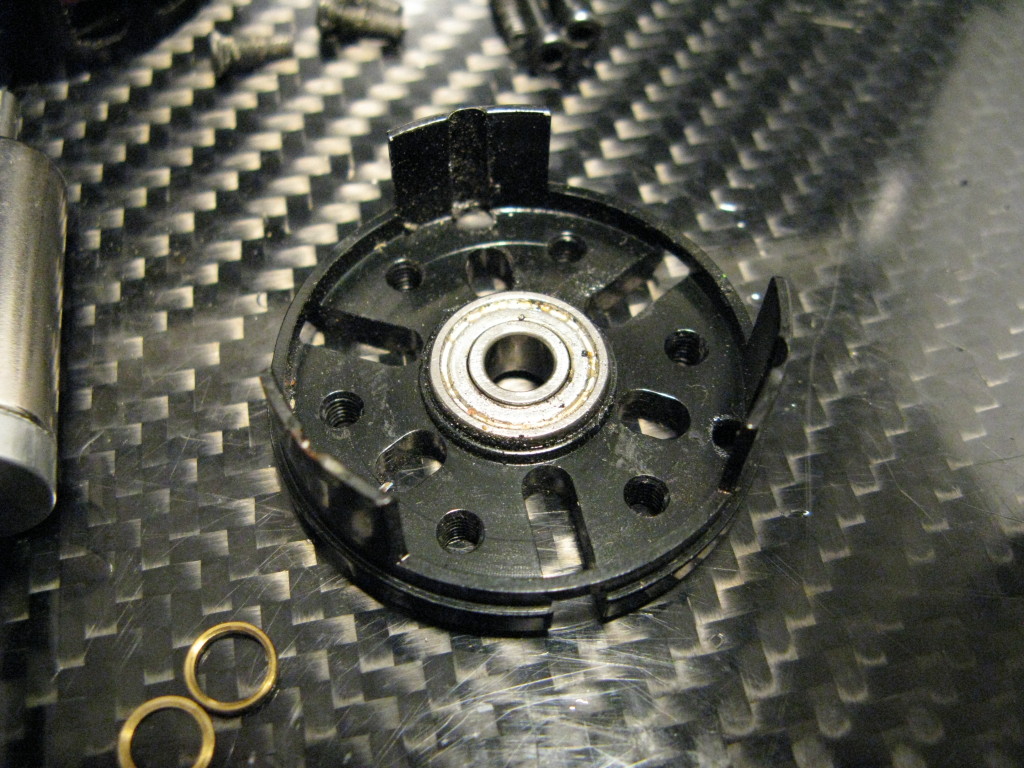 The rotor is a 12.3mm, 5mm core type. Strength wise, it feels quite strong in hand, but not overly so to the point of being hard to turn.. which bodes well for the on track performance.
The rotor is a 12.3mm, 5mm core type. Strength wise, it feels quite strong in hand, but not overly so to the point of being hard to turn.. which bodes well for the on track performance.
So overall, it’s a really high quality piece of kit.
However, I should note that there was one small issue. The motor I received in had a slight issue with one of the can screws being slightly too long, and deforming slightly the rear mounting plate. This caused the timing ring to get hung up, making it very hard to adjust the timing. A quick 5seconds with a file sorted the issue, and I’ve been reassured that it’s a known issue, and has already been rectified for all future motors.
On Track
So, finally… I had the opportunity to get some runs in with the motor. I actually really wanted to make it a solid test, and back to back versus my well setup V10. First couple of runs were with the V10, and set the baseline, then I switched to the ProAmps, without changing gearing or any ESC settings.
The times were close, but straight away I could the Proamps felt a little softer than how I had the V10 set. Overly though for a first run it was really good. Smooth, good top end, and plenty of brakes, whilst also running pretty cool. Very comparable to the V10 straight away, which is a very good thing.
For the second run, I wanted to see if I could improve the power band, so I gave the motor timing a quick tweak. On the V10 I had been running an extra 2° of motor timing, which seemed to help the power band over the kit setting. Checking the ProAmps sensor board position vs where it was on the V10, I set the ProAmps motor to 24°, so adding 4° from kit. On track, there was a noticeable improvement, more power all round, and deffinate more rip out the corners. Laptimes improved and were right on pace compared to the V10. The feel was still very smooth, with a good transition from throttle to brake, something that was a slight niggle with the V10. Overall very postivie improvement, and right up with the V10.
For the last round, in the name of completeness, I went back to the V10, so having a direct comparison to work with. And… no drastic change (which is good), and if anything the aforementioned braking issue came back.
Overview
Overall, the feel of the ProAmps motor was better than the V10, and more importantly the laptimes were right in the ball park to back it up too. Match that with the high quality of the construction, and its a motor than can defiantly hang with the best (of which I class the V10 in that regard). A top notch product, and one I am certainly looking forward to working on a bit more, as there is bound to be some unlocked performance potential remaining.
Thanks to Angelo from ProAmps for supplying the motor too test 🙂

